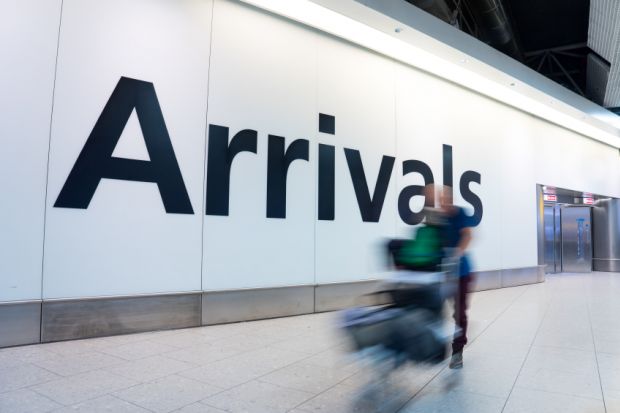The number of student dependants granted UK visas hit another record in the last year, while student numbers contributed to immigration that is at new record levels.
The government announced new restrictions on dependants just days ago, hoping to get ahead of the release of the latest data on rising net migration, which causes political difficulties for a Conservative government that has pledged to reduce it.
Home Office statistics reveal that 478,000 sponsored study visas were granted to main applicants in the year to March, 22 per cent more than the year before and the most on record.
Of main applicants, 139,000 (29 per cent) were for Indian nationals – 63 per cent more than the year before.
A further 100,397 (21 per cent) were for students from China, a fall of 14 per cent year-on-year.
The UK’s two main sources of sponsored study visa main applicants, India and China, are responsible for half of all those in the country, followed by Nigeria (12 per cent), Pakistan (6 per cent) and the United States (3 per cent).
The Home Office said changes in visa numbers over recent years would reflect a range of factors, including policy changes and the changes in travel patterns after the end of the pandemic.
Of the top five nationalities granted sponsored study visas, Nigerian nationals saw the largest percentage increase, up by 83 per cent to 57,636.
The number of dependant visas granted to Nigerians also increased significantly (by 146 per cent), meaning there are now more Nigerian family members of students (68,000) in the UK than students (58,000).
By comparison, just 1 per cent of all sponsored study-related visas for Chinese nationals were for dependants.
A total of 149,400 dependant visas were issued in the year to March – more than double the number in the previous year and 11 times more than were issued in the year to March 2019.
A quarter of all sponsored study-related visas were for dependants – up from 15 per cent a year before.
The Home Office said this “may reflect a change in the composition of students: if, for example, there are a greater number of older students attracted to study in the UK”.
Nigerian families are responsible for 45 per cent of all dependant visas, followed by India (28 per cent) and Pakistan (7 per cent).
Separate figures released by the Office for National Statistics (ONS) estimated total long-term immigration to the UK to be 1.2 million in 2022, the vast majority of which came from non-EU countries.
Jay Lindop, director of the centre for international migration at the ONS, said a series of “unprecedented world events” in 2022 and the lifting of Covid-19 restrictions led to the record levels.
The main drivers of the increase were people coming to the UK from non-EU countries for work, study and humanitarian purposes, she added.
The ONS said a range of different factors might be influencing the increase in numbers of people arriving to study, including the two-year graduate visa route – which “could be attracting international students to the UK”.
Despite previous reports that it would be scaled back, Ms Braverman announced this week that there would be no changes to the popular visa first introduced by Boris Johnson when he was prime minister.
Ms Lindop said there were some signs that the underlying drivers behind these high levels of migration were changing.
The lifting of lockdown restrictions in 2021 coincided with a sharp increase in the number of students arriving, but Ms Lindop said recent data suggested these students were now beginning to leave the country.
The ONS said evidence suggested that students typically stayed for shorter periods than other migrants and the majority left at the end of their study.
Madeleine Sumption, director of the Migration Observatory at the University of Oxford, said a “boom in international student recruitment” after a government-sponsored strategy to recruit more foreign students and diversify away from China was one of several reasons behind the unusually high net migration levels.
Certain parts of the “post-Brexit regime” – such as the reintroduction of post-study work rights for international students – were likely to have contributed to higher non-EU migration, added Ms Sumption.
“Nonetheless, it’s clear from the data that migration to the UK would have been unusually high right now even if the post-Brexit liberalisation of work and study visas had not happened.”





